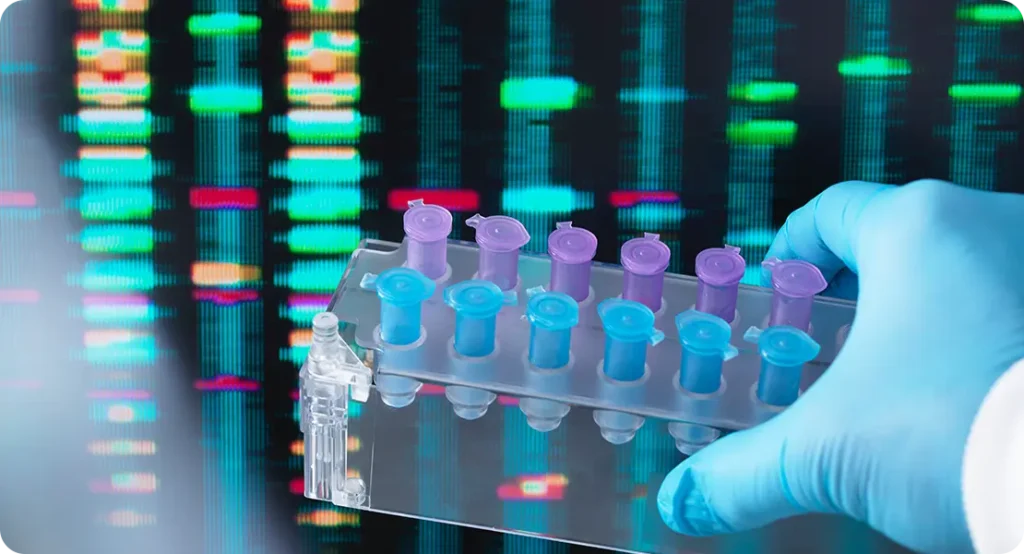If you’ve ever been told that cataracts are just a natural part of ageing, you’re not alone. They’re often seen as inevitable—something most of us will face sooner or later. But what if they didn’t have to be? What if we could stop cataracts in their tracks before they even begin? That’s the bold promise of gene therapy—and while we’re not there yet, researchers are laying the groundwork today for a future where cataract surgery may not be the only solution.
This article takes you on a deep dive into where we are now with gene therapy and cataracts, what early animal studies are showing, and why scientists are optimistic about editing or repairing the very genes that contribute to lens clouding. We’ll also explore how this might be used to stabilise key lens proteins, prevent oxidative damage, and offer new hope for people at high risk of developing cataracts.
Understanding the Biological Roots of Cataracts
To appreciate the potential of gene therapy, we first need to look at how cataracts actually form. The human lens is made up of transparent proteins called crystallins, which are designed to last a lifetime. These proteins are arranged in such a precise manner that light can pass through the lens without scattering.
However, over time, these proteins begin to degrade or clump together due to oxidative stress, genetic mutations, or environmental factors like UV light exposure. This protein misfolding leads to lens opacity—what we call a cataract.
Certain gene mutations, especially those related to crystallins (CRYAA, CRYAB) and other lens-specific proteins, have been linked to early-onset or congenital cataracts. Inherited cataracts often show up in childhood, while age-related ones tend to result from a combination of oxidative damage and slower turnover of damaged proteins. That’s where gene therapy might offer a solution.
What Is Gene Therapy and How Could It Help?
Gene therapy involves altering genetic material within a person’s cells to correct or prevent disease. In the context of cataracts, the aim would be to:
- Repair or replace faulty genes that are involved in the formation or maintenance of the lens;
- Introduce genes that produce protective proteins to prevent oxidative damage;
- Silence genes that may trigger harmful protein clumping or inflammatory responses.
This could potentially be done via techniques like CRISPR-Cas9, which allows for precise gene editing, or viral vectors, which are used to deliver new genetic material into cells.
While most of this work is still in animal models or laboratory settings, it’s showing promise—particularly in conditions where a single gene mutation is to blame.
Stabilising Crystallin Proteins Through Genetic Intervention
One of the most targeted areas in cataract gene therapy research is stabilising the crystallins. As mentioned earlier, these proteins are crucial to keeping the lens clear. Mutations in genes like CRYAA and CRYAB can cause these proteins to lose their correct structure and begin to aggregate.
In animal models, researchers have used gene therapy to either correct the mutation or insert additional copies of a stabilising version of the gene. For example, in a 2022 study involving mice with a congenital cataract mutation, the introduction of a functional CRYAA gene significantly improved lens transparency during development. This suggested that the malformed proteins could be counteracted—at least partially—by boosting levels of correctly folded crystallins.
Additionally, scientists are looking at chaperone proteins—molecules that help maintain proper protein structure. By increasing the production of molecular chaperones in the lens through gene delivery, researchers believe it may be possible to slow or prevent the aggregation that leads to opacification.
Combating Oxidative Stress at the Genetic Level

Another major contributor to cataract formation is oxidative stress. The lens is exposed to UV light, environmental toxins, and metabolic by-products that generate free radicals. Over time, these free radicals damage the proteins and lipids in the lens, accelerating cataract formation.
While antioxidants like vitamin C and glutathione naturally help neutralise this damage, their effectiveness diminishes with age. Gene therapy could potentially solve this by genetically boosting the production of antioxidant enzymes like superoxide dismutase (SOD) or glutathione peroxidase.
Animal studies have already demonstrated that upregulating these enzymes through genetic techniques can reduce lens opacity. For example, in one rat study, viral vectors carrying genes for antioxidant enzymes were injected into the eye, resulting in lower levels of oxidative damage and significantly delayed cataract formation.
If these results can be replicated in human trials, it could offer a powerful preventive treatment—especially for people with a family history of cataracts or high UV exposure.
Tackling Congenital Cataracts: Early Successes in Animal Models
Congenital cataracts are particularly attractive targets for gene therapy, largely because they are often monogenic—caused by a mutation in a single gene. This makes them ideal candidates for precise gene editing.
One standout example is a study conducted in 2020, where researchers used CRISPR-Cas9 to successfully correct a mutation in the GJA8 gene in embryonic mice. This gene is essential for lens fibre cell communication. The treated mice showed a significant reduction in lens cloudiness and a more normal lens architecture by birth.
What’s exciting here is not just the result, but the timing: this intervention occurred before birth. The idea of in utero gene therapy—correcting genetic defects before a baby is even born—could be revolutionary in cases where congenital cataracts would otherwise result in lifelong vision loss or multiple surgeries.
That said, this area is still in its infancy, and ethical, safety, and regulatory hurdles remain significant.
Could Adult-Onset Cataracts Be Delayed Through Gene Therapy?
While congenital cataracts offer a cleaner target, researchers are also exploring whether adult-onset (age-related) cataracts can be delayed or softened using similar approaches.
Here, the strategy is less about fixing a single mutation and more about enhancing resilience. Scientists are experimenting with:
- Delivering genes that enhance antioxidant defences in lens epithelial cells.
- Suppressing genes involved in protein degradation or misfolding.
- Stimulating autophagy genes, which help clear damaged cellular material from the lens.
There’s hope that such treatments could be given as a one-time injection in mid-life to delay the onset of cataracts by decades—or potentially prevent them entirely in high-risk individuals.
However, the challenge lies in delivery. The human lens is a tough place to reach, both literally and physiologically. Most gene therapies use viral vectors, which may not penetrate the lens efficiently or might provoke immune responses. Researchers are now investigating non-viral methods, including nanoparticle carriers, as a possible alternative.
Current Limitations and What Needs to Happen Next
Despite the potential, gene therapy for cataracts is not without its obstacles. Among the major limitations:
- Delivery issues: Getting the therapeutic gene to the right lens cells without damaging the eye is still tricky.
- Longevity of treatment: It’s not yet clear whether a single gene therapy session can provide lifelong protection.
- Off-target effects: Tools like CRISPR are powerful, but there’s a risk of unintended edits that could cause harm.
- Ethical concerns, particularly around treating embryos or unborn babies.
Then there’s the sheer cost. Gene therapy is among the most expensive types of medical treatment currently available. Any widespread use for a common condition like cataracts would require substantial cost reductions.
For the field to move forward, large-scale trials will be needed, ideally starting with people who have rare, inherited forms of cataracts where the benefit/risk ratio is easier to justify.
Where Might This Lead in 10–20 Years?
Fast forward a couple of decades and we might see:
- Prenatal screening and in utero correction for congenital cataracts.
- Midlife preventative gene injections for individuals with strong cataract risk profiles.
- Customised gene therapies based on your own genetic and lifestyle data.
- Combination treatments, where gene therapy is paired with antioxidant supplements, lifestyle changes, or even light-filtering contact lenses.
We’re still at the early experimental stages—but the pace of genetic science is accelerating rapidly. Just a decade ago, editing DNA in the eye would have seemed far-fetched. Now, with trials already underway for genetic blindness conditions like Leber’s congenital amaurosis, it’s no longer science fiction.
Frequently Asked Questions (FAQs)

1. Is gene therapy currently available as a treatment for cataracts in humans?
No, gene therapy is not yet approved or available as a standard treatment for cataracts in humans. At the moment, it remains in the experimental and preclinical stages, mostly involving animal models. Most cataract treatments today still rely on surgical removal of the cloudy lens and replacement with an artificial intraocular lens (IOL). However, gene therapy is being actively researched as a potential future option, particularly for congenital cataracts and age-related lens degeneration.
That said, clinical gene therapy is already being used for other eye conditions such as Leber’s congenital amaurosis and certain forms of inherited retinal disease. These breakthroughs suggest that the eye is a promising target for gene-based treatments, so it’s not unreasonable to expect cataract-related applications to follow—once safety and efficacy have been firmly established.
In the meantime, researchers are conducting detailed studies to refine the delivery mechanisms, prevent off-target effects, and understand the long-term impact of gene therapy on lens physiology.
2. What makes cataracts a good candidate for gene therapy?
Cataracts are considered a promising candidate for gene therapy for several reasons. First, in many congenital cases, they are caused by a single gene mutation, making them relatively straightforward to target with tools like CRISPR-Cas9. Second, the lens is an enclosed and immune-privileged part of the eye, which makes it less likely to reject gene therapy compared to other organs.
Also, because the lens does not have a direct blood supply, there’s less systemic risk, making localised treatment theoretically safer. In cases of age-related cataracts, although the genetic origins are more complex, researchers believe that boosting antioxidant defences and stabilising lens proteins via gene delivery could help delay onset or progression.
The lens’s slow turnover of cells could also work in favour of gene therapy, as long-term expression of a corrective gene might provide enduring benefit from a single treatment.
3. Could gene therapy replace cataract surgery in the future?
In theory, yes—but it’s unlikely to replace surgery across the board in the near future. Cataract surgery is one of the most successful and cost-effective procedures in all of medicine, with excellent outcomes and rapid recovery. Gene therapy, on the other hand, is still costly, technically demanding, and carries more unknowns at this stage.
The most realistic near-term scenario is gene therapy being used as a preventative measure, especially in patients with a known genetic predisposition or early lens abnormalities. Over time, as costs decrease and delivery systems improve, gene therapy could become more viable as an alternative for certain patient groups—particularly those not suited to surgery or living in areas with limited access to ophthalmic care.
So, rather than replacing surgery altogether, gene therapy might become one tool in a broader toolkit for managing cataract risk earlier and more holistically.
4. How is gene therapy delivered to the lens?
Delivery is one of the biggest challenges in cataract gene therapy. Most gene therapy techniques rely on viral vectors—like adeno-associated viruses (AAV)—which are modified to carry healthy copies of genes into specific cells. However, the lens is a difficult structure to reach due to its enclosed nature and lack of blood vessels.
Some animal studies have used subcapsular injections to deliver the gene therapy directly into the lens capsule. Others have experimented with intravitreal or anterior chamber injections, but these methods often struggle to penetrate the lens effectively.
Researchers are now exploring non-viral alternatives such as nanoparticles, liposomes, and even light-activated delivery systems that might offer better precision and safety. Still, much of this is in the proof-of-concept stage, and improving delivery methods will be key to translating early successes into human treatments.
5. What are the risks or downsides of using gene therapy for cataracts?
Like any medical innovation, gene therapy carries potential risks. One of the primary concerns is off-target genetic effects—where unintended parts of the genome are altered, possibly causing unintended consequences. This is particularly relevant for tools like CRISPR-Cas9, which are precise but not infallible.
Another issue is immune response. Some viral vectors used for delivery can trigger inflammation or immune activation, which could damage sensitive ocular structures. Long-term expression of a gene might also cause problems if it leads to protein overproduction or disrupts natural feedback loops in lens metabolism.
Then there’s the practical aspect: cost, regulation, and access. Even if gene therapy proves effective in the lab, it could take many years and millions in funding to make it a safe, approved treatment that’s accessible through routine healthcare systems.
Final Thoughts
So, is gene therapy the silver bullet for cataracts? Not yet—but it might be part of the solution in the years to come. By focusing on the genetic and oxidative roots of lens ageing, researchers are trying to address cataracts not just as a mechanical problem that needs surgery, but as a molecular one that could be prevented at the source.
If you’re someone with a family history of cataracts or just curious about what’s coming down the line, keep an eye on this field. The breakthroughs we’re seeing in animal studies today could pave the way for human applications tomorrow.
References
- Shentu, X., Xu, Y., Sun, X., and Zhang, J. (2022). CRYAA gene correction using CRISPR-Cas9 in congenital cataract model mice. Molecular Vision, 28, pp.215–224.
- Wang, B., Wang, J., Zhang, X., et al. (2021). Gene therapy targeting antioxidant pathways in the lens delays cataract formation in rodents. Experimental Eye Research, 203, 108429.
- Li, F., Wang, L., Yan, Y., et al. (2020). CRISPR-mediated in utero editing of the GJA8 gene prevents congenital cataracts in mice. Nature Communications, 11, p.4856. doi:10.1038/s41467-020-18636-6
- Bassnett, S. and Duncan, G. (2020). Lens protein homeostasis and cataract: Current perspectives and future directions. Progress in Retinal and Eye Research, 76, 100828.
- Zhang, T., Xiang, Y., Yang, X., et al. (2023). Recent advances in non-viral gene delivery systems for ocular diseases. Frontiers in Pharmacology, 14, 1170241.

